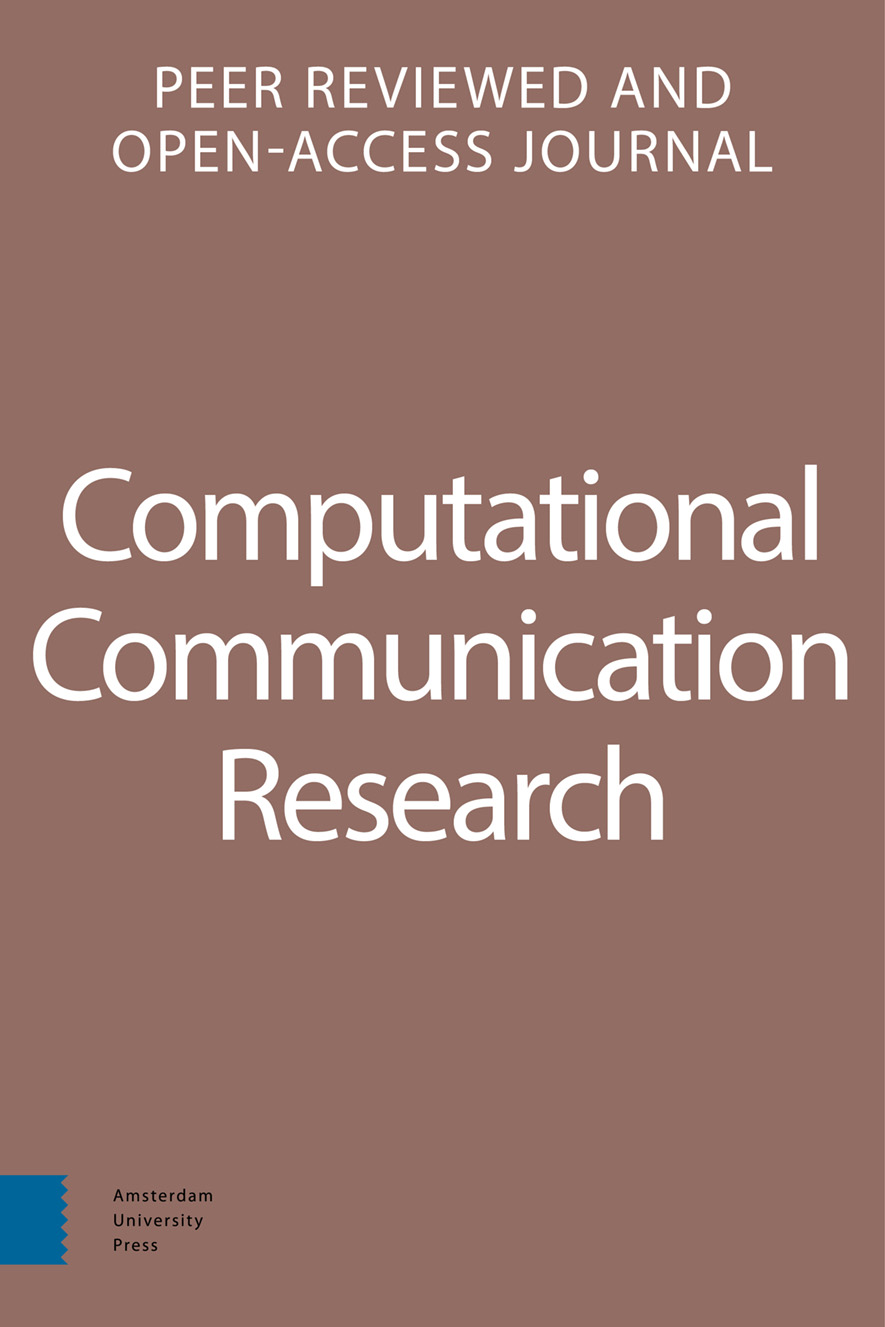- Home
- A-Z Publicaties
- Computational Communication Research
- Previous Issues
- Volume 6, Issue 1, 2024
Computational Communication Research - Volume 6, Issue 1, 2024
Volume 6, Issue 1, 2024
Taal:
Engels
-
-
Using State-of-the-art Emotion Detection Models in a Crisis Communication Context
Meer MinderTimes of crisis are usually associated with highly emotional experiences, which often result in emotionally charged communication. This is especially the case on social media. Identifying the emotional climate on social media is imperative in the context of crisis communication, e.g., in view of shaping crisis response strategies. However, the sheer volume of social media data often makes manual oversight impossible. In Read More
-
-
-
How COVID-19 and the News Shaped Populism in Facebook Comments in Seven European Countries. : A Computational Analysis.
Meer MinderDoor Daniel ThieleCitizen-generated populism is flourishing in the comments sections of online news. The factors that shape the extent of such populist communication from below are still under-researched. This study focuses on the COVID-19 crisis to examine how contextual and media-related factors are related to the extent of populism in comment sections on Facebook pages of news outlets from seven European countries (A Read More
-
-
-
Agent-based modeling of diversity, new information and minority groups in opinion formation
Meer MinderAuteurs: Mark Pogson & Tom NichollsUnderstanding the decentralized formation of public opinion is increasingly important to communication research. Although many key determinants cannot be observed empirically, we argue they can be explored through theoretical modeling. Building on an existing agent-based model of opinion dynamics, our study introduces more complex, but theoretically interesting and realistic, agent behavior. We model distinct opinion tend Read More
-
-
-
Is Matilda Playing it Safe? : Gender in Computational Text Analysis Methods
Meer MinderAuteurs: Mariken van der Velden & Alona O. DolinskyNumerous studies document the gender gap in published articles in political science journals, observing systematic imbalances in the sub- mission pool which result in a distorted publication pattern. In this study we test some pathways that may explain the distorted submission pool: a) playing it safe due to the gender perception gap, and b) as a consequence of the Matilda effect setting a higher bar for methodological knowledg Read More
-
-
-
What makes computational communication science (ir)reproducible?
Meer MinderAuteurs: Chung-hong Chan, Tim Schatto-Eckrodt & Johannes GruberComputational methods are in full swing in communication science. Part of their promise is to make communication research more reproducible. However, how this plays out in practice has not been systematically studied. We verify the reproducibility of the entire cohort of 30 substantive and methods papers published in the journal Computational Communication Research (CCR), the official journal of the ICA Computational Me Read More
-
-
-
Tools of the Trade – When Are Software Tools Mentioned in Computational Text Analysis Research?
Meer MinderThe use of computational methods for text analysis has been rapidly gaining a foothold in computational social science. Yet, little is known about the reporting practices of the software tools utilised in this field. This research note investigates the factors influencing the likelihood of software tools being mentioned in social science journal articles. To this end, we reviewed 406 journal articles, representing all computational text Read More
-
Most Read This Month
Article
content/journals/26659085
Journal
10
5
false
nl

Most Cited Most Cited RSS feed
-
-
Computational observation
Auteurs: Mario Haim & Angela Nienierza
-
- More Less

